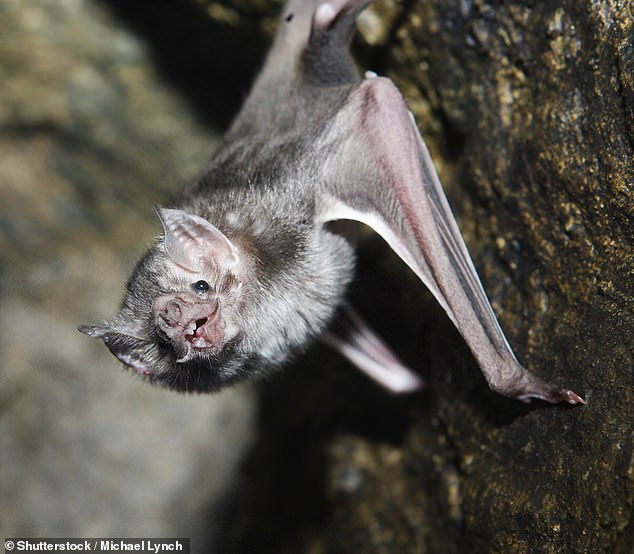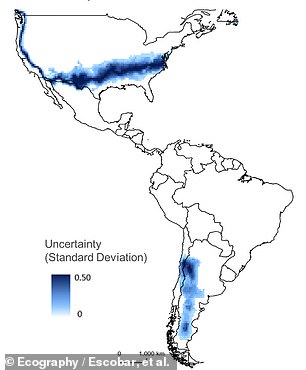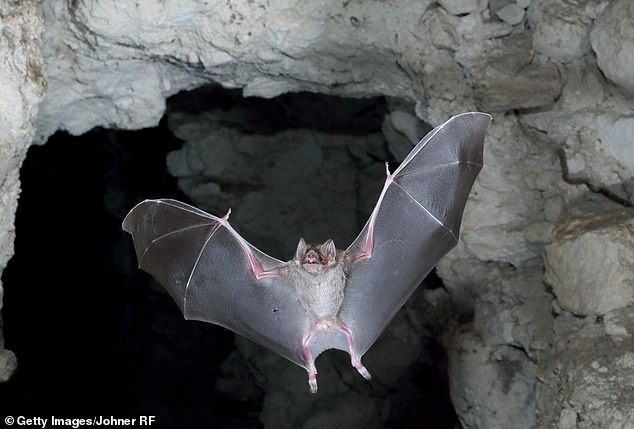Bloodthirsty vampire bats have been spotted just 30 miles outside of Texas and scientists fear the rabies-riddled creatures will invade the US in the next five years
Swarms of tiny, bloodthirsty vampire bats spread their wings further north toward the U.S.-Mexico border.
Scientists led by a team from Virginia Tech have said they expect an “invasion of vampire bats on US soil” in the future, with sightings now just 30 miles outside Texas.
Colonies of the five-inch-long creatures have long plagued cattle ranches south of the border, drawing parasitic blood from the cattle.
The bats cost Mexican farmers a lot of money $46.7 million annually due to the deaths of rabies-infected animals, according to a 2020 report from the United States Department of Agriculture (USDA).
Researchers believe warming temperatures are making North America more hospitable to the bloodthirsty creatures.

Scientists led by a team from Virginia Tech now say they expect an “invasion of vampire bats on American soil” in the future. The bats could cost lives as rabies-infected specimens climb the North American continent and spread the deadly disease


Above, in red (left), the estimated distribution of vampire bats from 1901 to 2019, with the deeper reds showing the highest likelihood, based on the researchers’ confidence in their data and models. In blue (right) an ‘uncertainty map’ revealing potential areas for vampire bat expansion
Previous reports from the USDA estimated that the arrival of vampire bats in South Texas could drain between $7 million and $9 million from local livestock industries in terms of rabies deaths alone.
But the bats can also cost lives as rabies-infected specimens climb the continent and spread the deadly disease.
“It is a difficult situation that we want to address as quickly as possible, so vigilance is critical,” Texas Farm Bureau spokesman Gary Joiner said. Wired.
“This bat species is causing a lot of concern in agriculture due to its ability to transmit disease, injure livestock and cause infections,” Joiner said.
‘Rabies is the most obvious problem because of the welfare of the animals and the potential to infect humans.’
Although human deaths from rabies are currently rare in the United States, killing only one to three people per year, according to the U.S. Centers for Disease Control and Prevention (CDC), these deaths are increasingly caused by infected bats.
Although vampire bats rarely bite humans, the creatures will strike when threatened, and their expanding habitat means more opportunities for hostile interactions.
According to Luis Escobar, an assistant professor of conservation at Virginia Tech who has been monitoring the bats’ progress north, efforts to vaccinate the bats themselves against rabies could backfire.
“Rabies can reduce bat populations from 10 to 80 percent,” Escobar said. “Imagine if we had too many vampire bats because we didn’t have this virus.”

Vampire bats cost Mexican farmers more than $46.7 million a year due to the deaths of rabies-infected animals, according to a 2020 report from the United States Department of Agriculture (USDA). Previous USDA reports estimate the bats in South Texas could cost an additional $7 to $9 million
Some wildlife managers have experimented with a rabies vaccine gel that wild-caught bats then distribute to their roosts, where the social species groom each other.
But Escobar worries that this technique risks causing vampire populations to explode.
“We don’t know what the ecological consequences will be of disrupting the circulation of this virus in bats,” he said.
Instead, researchers and USDA representatives suggest that ranchers may want to follow the lead of their Mexican and Colombian counterparts and vaccinate their livestock and pets.
And local governments may want to vaccinate wild animals that vampire bats prey on.
“Landowners will want to consider whether or not they should vaccinate their animals,” said Mike Bodenchuk, director of the USDA’s Wildlife Services division in Texas, as he tries to quell exaggerated fears.
“They won’t cross the border in the millions,” he noted. “It’s going to be a slow trickle for a while.”
This species of vampire bat, The mode rotundustends to thrive in warm and humid regions where temperatures do not fall below 50 degrees Fahrenheit.
Late last month, Virginia Tech’s Escobar and a team of international conservation scientists published the results of their examination of 120 years of climate data, seasonal vampire catches and other data, such as rabies deaths in cattle recorded by the Regional Information System for the Epidemiological Surveillance of Rabies.
The researchers found that the bat’s geographic range has shifted its distribution significantly north, as they wrote in the journal. Ecography“a natural invasion of northern Mexico at an average rate of 9.76 km per year (6.06 miles per year).”
Escobar and his co-authors added that their large database analysis is consistent with previous work using DNA evidence to map bat migrations.
‘Genetic assessments have shown that D. roundabout from Mexico is rapidly expanding its range northward,” they noted. ‘(but) disagreements between previous modeling efforts have shown that further research is still warranted.’
